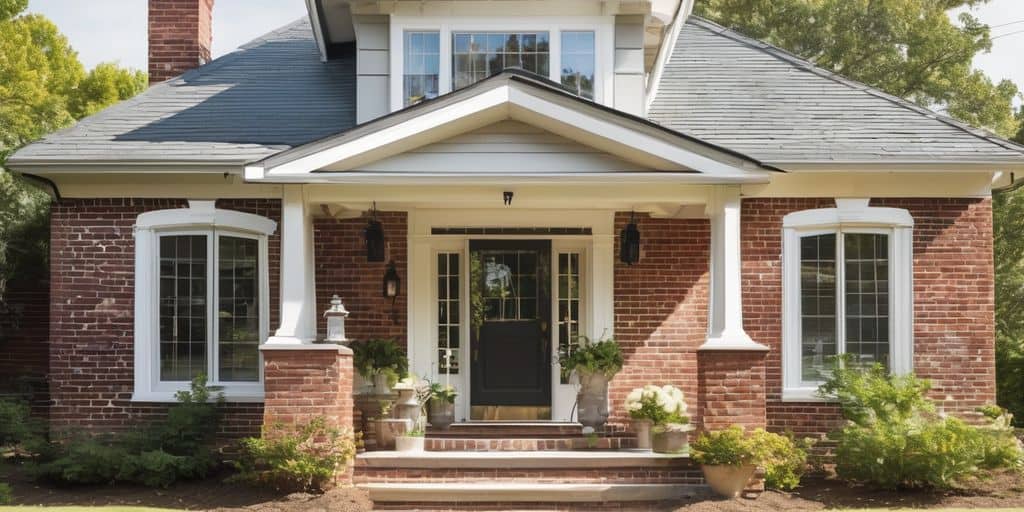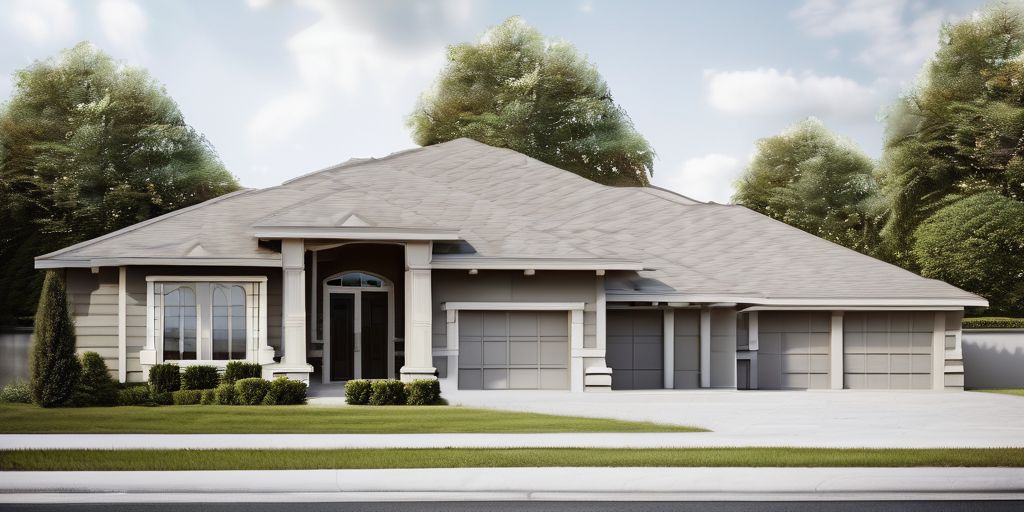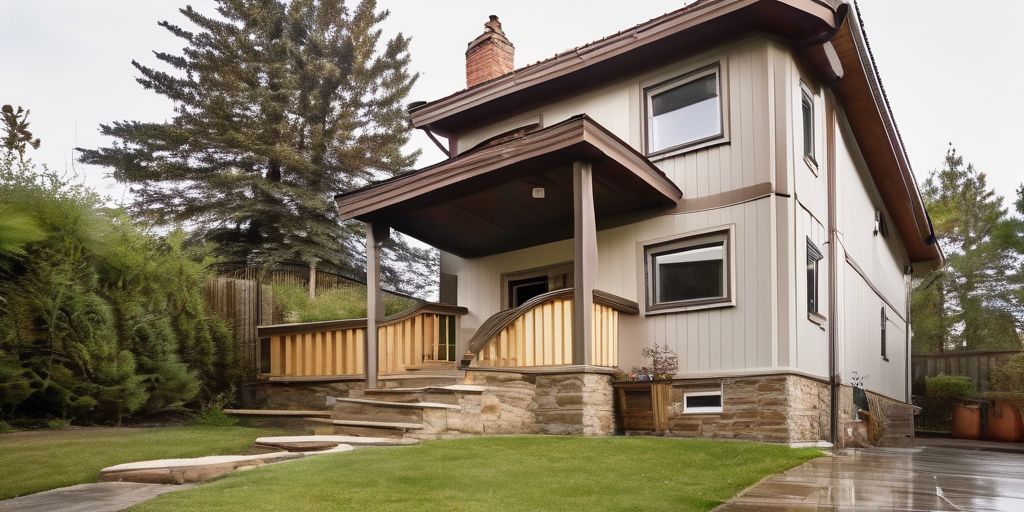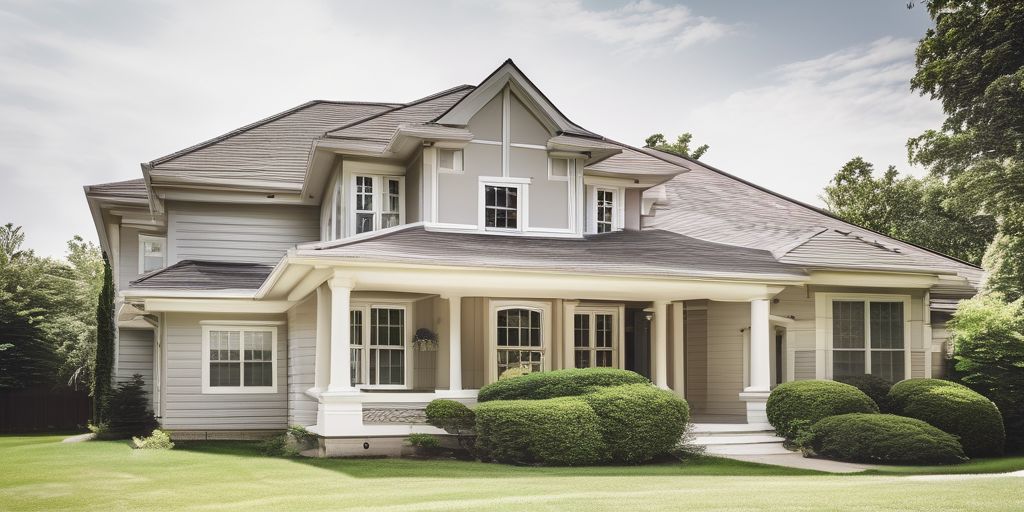Painted brick exteriors look great and can last a long time if you take good care of them. Regular cleaning, checking for damage, and doing touch-ups are important to keep your home looking nice. This article will give you some easy tips to help maintain your painted brick exterior.
Key Takeaways
- Regular cleaning and touch-ups help keep painted brick looking fresh.
- Choose gentle cleaning products to avoid damaging the paint.
- Inspect your brick for cracks or chips and fix them quickly.
- Seal your brick to prevent moisture damage.
- Repaint every few years to maintain a vibrant look.
Regular Cleaning for Painted Brick
Keeping your painted brick looking fresh and vibrant requires regular cleaning. Routine maintenance is key to ensuring your brick remains in top condition without being too time-consuming.
Choosing the Right Cleaning Products
- Use a mixture of water and mild detergent for general cleaning.
- Avoid harsh chemicals and power washers, as they can damage the paint.
- A soft-bristled brush is ideal for removing dirt and debris without harming the surface.
How Often to Clean Your Painted Brick
- Clean your painted brick at least twice a year.
- Increase the frequency if your brick is exposed to harsh weather conditions or heavy pollution.
- Regular inspections can help you spot any issues early and address them promptly.
Steps for Effective Cleaning
- Gently wash the surface with your water and detergent mixture.
- Use a soft-bristled brush to scrub away dirt and grime.
- Rinse thoroughly with clean water to remove any soapy residue.
- Allow the brick to dry completely before applying any sealants or paint.
Remember, a clean brick surface is the canvas for your painting project. Ensuring it’s free from contaminants will help your paint job last longer and look better.
Inspecting for Damage
Regular inspections are key to maintaining the beauty and integrity of your painted brick exterior. Identifying issues early can save you time and money in the long run.
Identifying Common Issues
When inspecting your painted brick, look for:
- Cracks in the mortar or brick
- Holes or gaps
- Crumbling mortar
- Bulging bricks
These signs can indicate underlying problems that need to be addressed.
Tools for Inspection
To effectively inspect your painted brick, you will need:
- A flashlight for better visibility
- A small hammer to gently tap the bricks
- A moisture meter to detect any hidden moisture
Using these tools can help you spot issues that aren’t immediately visible.
When to Call a Professional
If you find significant damage, such as large cracks or bulging bricks, it might be time to call a professional. They can provide a thorough assessment and recommend the best course of action.
Proactive maintenance can extend the life of your paint job. Immediate repairs and touch-ups can prevent minor issues from becoming major problems.
Touch-Up Tips for Painted Brick
Preparing the Surface for Touch-Ups
Before you start, identify the areas that need attention. Look for chips, cracks, or peeling paint on your bricks. Prepare the surface by cleaning it and removing any loose paint. This ensures that your touch-ups adhere properly.
Best Practices for Touch-Up Painting
- Match the paint color as closely as possible. If you have leftover paint, that’s perfect; otherwise, take a chip to your local store for a color match.
- Use a small brush or roller for precision and to avoid over-painting the surrounding areas.
- Apply the paint using long, vertical strokes. Work in small sections and be careful to avoid drips or streaks.
- Allow the paint to dry thoroughly according to the manufacturer’s instructions before applying any additional coats or finishing touches.
Remember, touch-ups are just that – small, targeted fixes to keep your painted bricks looking their best. They are not a substitute for a full repaint, which may be necessary after several years or when extensive wear is visible.
Choosing the Right Paint
The best defense against the elements is a quality paint job. Selecting weather-resistant paint is especially beneficial in sunny areas, ensuring both durability and aesthetic appeal.
Preventing Moisture Damage
Moisture can be a major enemy of painted brick exteriors. Preventing moisture damage is crucial to maintaining the beauty and longevity of your painted brick walls. Here are some tips to help you keep moisture at bay and protect your investment.
Importance of Sealing
Sealing your painted brick is essential to prevent moisture from seeping into the bricks. A good sealant acts as a barrier, keeping water out and reducing the risk of damage. Make sure to:
- Use a high-quality, breathable masonry sealant.
- Apply the sealant according to the manufacturer’s instructions.
- Reapply the sealant every few years to maintain its effectiveness.
Detecting Moisture Problems Early
Early detection of moisture issues can save you a lot of trouble down the road. Look out for signs such as:
- Water stains or discoloration on the brick surface.
- Mold or mildew growth.
- Efflorescence, which is a white, powdery substance on the brick.
If you notice any of these signs, take action immediately to address the problem.
Solutions for Moisture Issues
If you find moisture problems, there are several solutions you can consider:
- Improve Drainage: Ensure that gutters and downspouts are functioning properly to divert water away from the brick.
- Repair Leaks: Fix any leaks in your roof, windows, or doors to prevent water from entering your home.
- Use Dehumidifiers: In damp areas, use dehumidifiers to reduce moisture levels.
- Repaint with Care: When repainting, use high-quality, breathable paint to allow the brick to “breathe” and prevent trapped moisture.
Keeping an eye on moisture-related issues and addressing them promptly can help you maintain the beauty and durability of your painted brick exterior.
By following these tips, you can protect your painted brick from moisture damage and enjoy a beautiful, long-lasting finish.
Repainting Your Brick Exterior
When to Repaint
Repainting your brick exterior can give your home a fresh, modern look. But how do you know when it’s time to repaint? Here are some signs:
- Fading or chalking paint
- Visible cracks or peeling
- Stains that won’t come off with cleaning
Regular maintenance can help you spot these issues early.
Selecting High-Quality Paint
Choosing the right paint is crucial for a long-lasting finish. Look for exterior paint that is:
- Weather-resistant
- UV-resistant
- Suitable for masonry
Consult the manufacturer’s guidelines for application techniques and drying times. Multiple coats may be necessary to achieve the desired color and coverage.
Steps for a Successful Repaint
Follow these steps to ensure a smooth repainting process:
- Clean the brick thoroughly. Use a pressure washer to remove dirt and mildew.
- Let the brick dry completely. This may take a few days depending on the weather.
- Mask off windows and doors with plastic or painter’s tape.
- Apply a primer suitable for masonry surfaces.
- Paint using a high-quality exterior paint. Multiple coats may be needed.
- Allow sufficient drying time between coats.
Repainting your brick exterior is a great way to enhance your home’s curb appeal. With the right preparation and materials, you can achieve a stunning transformation.
If you’re unsure about any step, consider hiring a professional exterior painter to ensure the job is done right.
Seasonal Maintenance Tips
Winter Care for Painted Brick
Winter can be tough on painted brick. Regular maintenance and timely touch-ups are key to preserving the appearance and integrity of painted brick exteriors. Here are some tips to help you through the colder months:
- Inspect your home annually for any chips or cracks in the paint and perform touch-ups as needed to prevent moisture from penetrating the brick.
- Clear snow and ice from around the base of your home to prevent water damage.
- Ensure gutters and downspouts are clear to avoid water buildup.
Summer Maintenance Checklist
Summer is a great time to give your painted brick some extra attention. Follow this checklist to keep your exterior looking its best:
- Wash the brick surface to remove dirt and mildew.
- Check for any signs of peeling or blistering paint and address them promptly.
- Trim back any overgrown vegetation that may be touching the brick.
Handling Extreme Weather Conditions
Extreme weather can cause significant damage to painted brick. Here are some steps to protect your home:
- Apply a fresh coat of paint every so often to maintain a strong barrier against the elements.
- Use high-quality paint specifically designed for exterior brick to reduce the need for frequent maintenance.
- Always check the weather forecast before planning any painting projects to ensure optimal conditions.
By following these guidelines, homeowners can achieve a beautiful and durable finish that will stand the test of time.
Avoiding Common Mistakes
Using the Wrong Cleaning Tools
Using the wrong tools can damage your painted brick. Always use soft brushes or sponges to avoid scratches. Avoid high-pressure washers as they can strip the paint.
Ignoring Small Cracks and Chips
Small cracks and chips may seem minor, but they can lead to bigger problems. Regularly inspect your brick exterior and fix any issues promptly. This helps maintain the durability and look of your painted brick.
Overlooking the Importance of Quality Paint
Choosing the best paint for brickwork is crucial for durability and aesthetics. High-quality paint can make your exterior easier to maintain and last longer. Professional guidance and maintenance are key for long-lasting results.
Regular maintenance and using the right products can save you time and money in the long run.
Making mistakes is easy, but avoiding them can save you time and money. Whether you’re painting your home or tackling a new project, it’s important to know the common pitfalls. For more tips and expert advice, visit our website. Don’t miss out on the best ways to get your job done right!
Conclusion
Taking care of your painted brick exterior doesn’t have to be a daunting task. With regular cleaning, timely touch-ups, and a bit of attention to detail, you can keep your home looking beautiful for years. Remember to inspect your brickwork for any signs of damage and address them promptly. By following these simple tips, you’ll not only maintain the charm of your painted brick but also protect it from the elements. Happy maintaining!
Frequently Asked Questions
How often should I clean my painted brick exterior?
It’s best to clean your painted brick exterior at least once a year. If you live in an area with a lot of dirt or mildew, you might need to clean it more often.
What kind of cleaning products should I use?
Use a gentle cleaner and a soft brush or cloth. Avoid abrasive cleaners or tools that might damage the paint.
When should I repaint my brick exterior?
Typically, you should repaint your brick exterior every 3-5 years. This can depend on the quality of the paint and how much exposure it gets to harsh weather.
How can I prevent moisture damage on my painted brick?
Make sure to seal your brick properly and check for any signs of moisture problems regularly. Address any issues as soon as you notice them.
What should I do if I see cracks or chips in the paint?
If you notice any cracks or chips, you should touch them up as soon as possible. This helps prevent moisture from getting into the brick and causing more damage.
Is it important to use high-quality paint for my brick exterior?
Yes, using high-quality paint designed for exterior brick can reduce the need for frequent maintenance and repainting.






